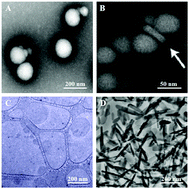Nanocomposites for the delivery of bioactive molecules in tissue repair: vital structural features, application mechanisms, updated progress and future perspectives
Abstract
In recent years, nanocomposites have attracted great attention in tissue repair as carriers for bioactive molecule delivery due to their biochemical and nanostructural similarity to that of physiological tissues, and controlled delivery of bioactive molecules. In this review, we aim to comprehensively clarify how the applications of nanocomposites for bioactive molecule delivery in tissue repair are achieved by focusing on the following aspects: (1) vital structural features (size, shape, pore, etc.) of nanocomposites that have crucial effects on the biological properties and function of bioactive molecule-delivery systems, (2) delivery performance of bioactive molecules possessing high entrapment efficiency of bioactive molecules and good controlled- and sustained-release of bioactive molecules, (3) application mechanisms of nanocomposites to deliver and release bioactive molecules in tissue repair, (4) updated research progress of nanocomposites for bioactive molecule delivery in hard and soft tissue repair, and (5) future perspectives in the development of bioactive molecule-delivery systems based on nanocomposites.

- This article is part of the themed collection: Journal of Materials Chemistry B Recent Review Articles


 Please wait while we load your content...
Please wait while we load your content...